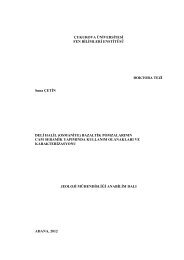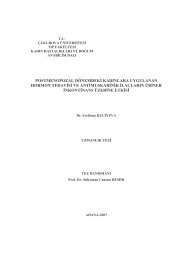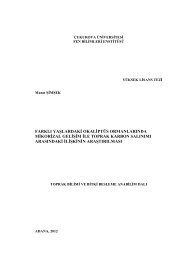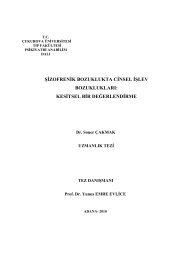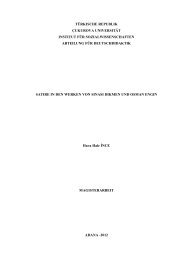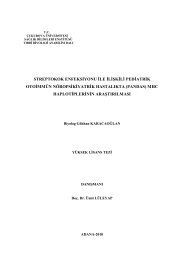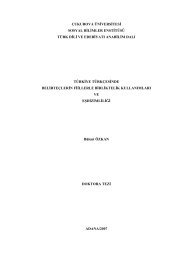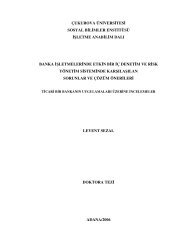ÇUKUROVA UNIVERSITY INSTITUTE OF NATURAL AND APPLIED ...
ÇUKUROVA UNIVERSITY INSTITUTE OF NATURAL AND APPLIED ...
ÇUKUROVA UNIVERSITY INSTITUTE OF NATURAL AND APPLIED ...
You also want an ePaper? Increase the reach of your titles
YUMPU automatically turns print PDFs into web optimized ePapers that Google loves.
3. FUNDAMENTALS <strong>OF</strong> DVR Mustafa İNCİ<br />
phase itself further worsens the severity of the sag. Additionally, these schemes<br />
cannot provide phase correction, as sags are generally accompanied by phase jumps<br />
(Subramanian et al., 2010).<br />
3.2.3. Energy Storage<br />
Energy storage is required to provide real power to the load when large<br />
voltage sags take place. Examples of energy storage are lead-acid batteries, flywheel,<br />
superconducting magnetic energy storage (SMES), etc. For SMES, batteries and<br />
capacitors, which are dc devices, solid-state inverters are used in the power<br />
conversion system to accept and deliver power. For flywheels, which have rotating<br />
components, ac-to-ac conversion is performed. The energy storage devices used for<br />
this study are lead-acid batteries. Batteries provide rapid response for either charge or<br />
discharge, but the discharge rate is limited by chemical reaction rates so that the<br />
available energy depends on the discharge rate. Generally, the DVR has several<br />
operating states (Zhan et al., 2001).<br />
1) When a voltage sag/swell occurs on the line, the DVR responds by<br />
injecting three single-phase voltages in synchronism with the network voltages. Each<br />
phase of the injected voltages can be controlled independently or together in<br />
magnitude and phase. The DVR draws active power from batteries and supplies this<br />
together with reactive power to the load (Zhan et al., 2001).<br />
2) When the voltage supply is operating under normal conditions, the DVR<br />
operates in a standby mode if the battery is fully charged; or the DVR operates in the<br />
self-charging control mode if the batteries need to be recharged (Zhan et al., 2001).<br />
3) In the event of a fault or short circuit downstream, the DVR (specifically,<br />
the VSI) must be protected against overcurrent flowing through the power<br />
semiconductor switches. The rating of the DVR inverters is the limiting factor for<br />
normal load current seen in the primary windings and reflected in the secondary<br />
windings of the series insertion transformer. For line currents exceeding the inverter<br />
rating, a bypass scheme is incorporated to protect the power electronics (Zhan et al.,<br />
2001).<br />
23



